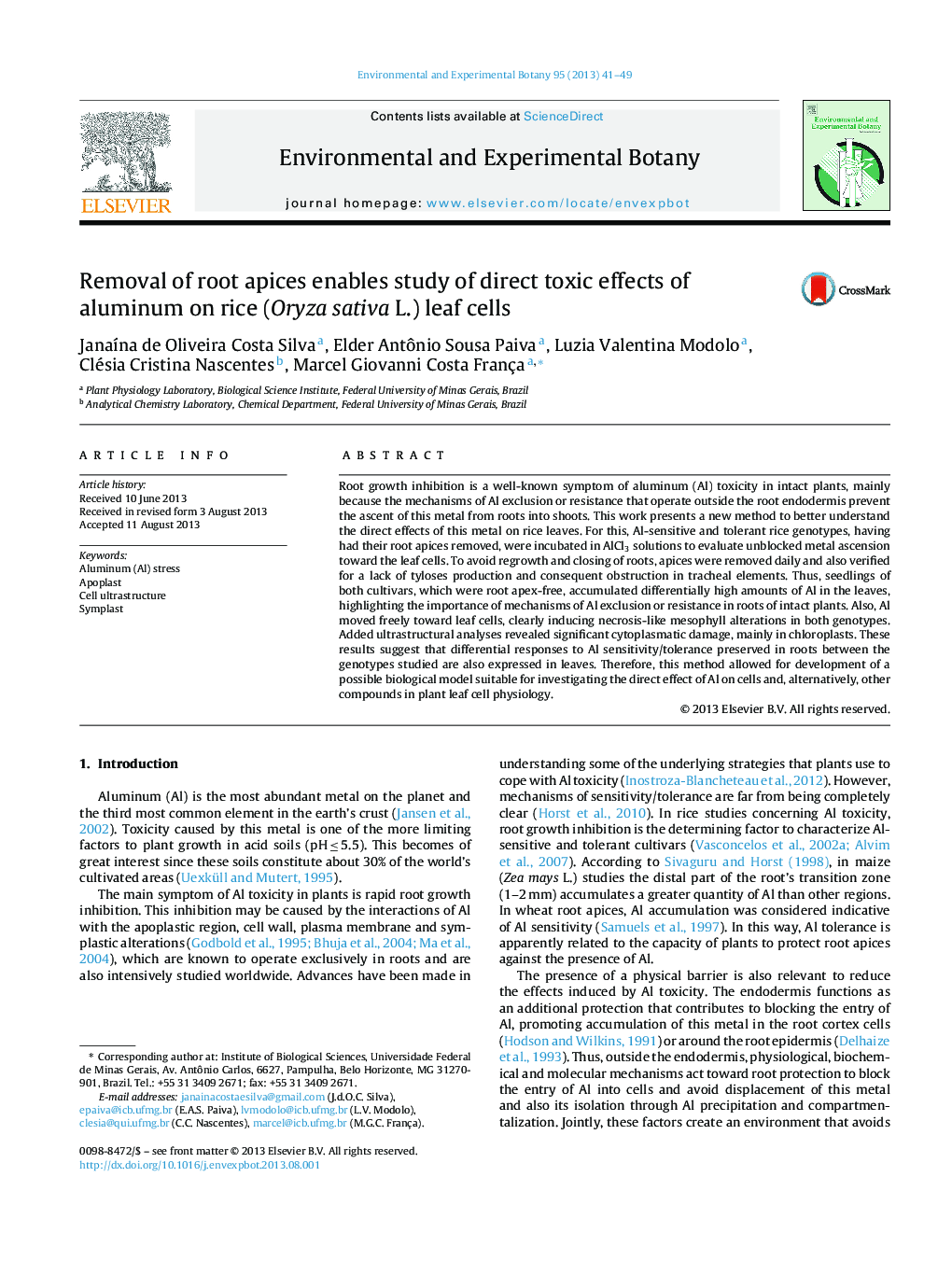| Article ID | Journal | Published Year | Pages | File Type |
|---|---|---|---|---|
| 4554462 | Environmental and Experimental Botany | 2013 | 9 Pages |
•We removed root apices of two rice cultivars with differential aluminum tolerance.•Tracheal elements without tylose permitted free aluminum movement into cell leaves.•Differential aluminum accumulations were observed in these leaves.•Toxic effect types were observed equally in mesophyll, chloroplasts and mitochondria.
Root growth inhibition is a well-known symptom of aluminum (Al) toxicity in intact plants, mainly because the mechanisms of Al exclusion or resistance that operate outside the root endodermis prevent the ascent of this metal from roots into shoots. This work presents a new method to better understand the direct effects of this metal on rice leaves. For this, Al-sensitive and tolerant rice genotypes, having had their root apices removed, were incubated in AlCl3 solutions to evaluate unblocked metal ascension toward the leaf cells. To avoid regrowth and closing of roots, apices were removed daily and also verified for a lack of tyloses production and consequent obstruction in tracheal elements. Thus, seedlings of both cultivars, which were root apex-free, accumulated differentially high amounts of Al in the leaves, highlighting the importance of mechanisms of Al exclusion or resistance in roots of intact plants. Also, Al moved freely toward leaf cells, clearly inducing necrosis-like mesophyll alterations in both genotypes. Added ultrastructural analyses revealed significant cytoplasmatic damage, mainly in chloroplasts. These results suggest that differential responses to Al sensitivity/tolerance preserved in roots between the genotypes studied are also expressed in leaves. Therefore, this method allowed for development of a possible biological model suitable for investigating the direct effect of Al on cells and, alternatively, other compounds in plant leaf cell physiology.
Graphical abstractThe toxic effect of aluminum (Al) on shoots is poorly understood. In derooted rice plants, a free stream of Al toward shoots was clearly harmful. Tracheal elements without tyloses permitted unblocked metal ascension, and a greater quantity of Al was observed in shoots. Ultrastructure analysis revealed significant cytoplasmic damage, mainly in chloroplasts.Figure optionsDownload full-size imageDownload as PowerPoint slide
